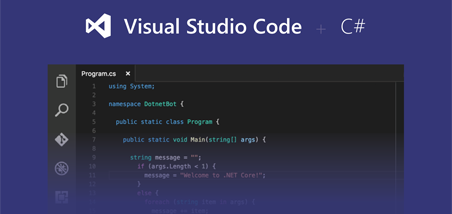Advanced Oracle SQL Tuning
Oracle EğitimleriBu eğitimde
katılımcılar, Oracle SQL ayarlama ve SQL kodlarına ayarlamayı nasıl
uygulayacaklarını öğrenirler. Bu eğitim, veritabanı geliştiricilerinin,
SQL geliştiricilerinin ve DBA’ların
yetersiz SQL’ı tanımlamalarına ve ayarlamalarına yardımcı olur. Eğitim, Oracle
veritabanının bir SQL ifadesini nasıl çalıştırdığı hakkında çeşitli seviyelerde
ayrıntıları ortaya koyan araştırma yöntemlerini içermektedir.
Katılımcılar, verilere erişmenin farklı yollarını ve belirli bir veritabanına
ulaşmanın en etkili yolunun bu yollar mı olup olmadığını bulmayı öğrenirler.
Ayrıca, en iyi yöntemin
kullanılıp kullanılmadığından nasıl emin olunacağı konusunda da bilgi sahibi
olurlar.
Uygulama
geliştirmeye odaklı bu eğitimde, katılımcılar Oracle SQL ifadesi ayarlamasını
ve Oracle veritabanı için en iyi şekilde ayarlanmış en uygun SQL ifadelerini
nasıl yazacaklarını öğrenirler. Ayrıca eğitimde yürütme planlarını yorumlama ve
verilere başka ne şekilde erişilebileceği konuları da ele alınır. SQL kodunun
nasıl şifreleneceği, karar verileceği ve SQL kodlarına ayarlamanın nasıl
uygulanacağı da öğretilir.
Çeşitli ayarlama teknikleri örneklerle açıklanır.
Örneğin, dosyaları izleme, bağlama değişkenlerinden yararlanma ve farklı
türlerdeki dizinleri kullanma gibi konulara değinilir.
Bu
eğitimde neler öğreneceksiniz?
• Yetersiz SQL
ifadelerini belirlemek için Oracle araçlarını kullanma
• Automatic SQL Tuning
(Otomatik SQL Ayarlama) kullanma
•
Gerçek Zamanlı SQL
izlemeyi kullanma
• Daha verimli SQL
ifadeleri yazma
• Aşırı yüklü SQL
ifadelerini izleme
•
Veritabanı nesneleri üzerinde
Optimizer istatistiklerini yönetme
• Optimizer sürecinin
adımları ve operatörleri hakkında
bilgiler
•
Yürütme planlarını
yorumlama
• Uygulama izlemeyi
yerine getirme
Eğitim İçeriği
Introduction to SQL Tuning
•
Intro to the class
•
History of SQL
•
Evolution of SQL
•
Exercise – declarative SQL
Internal processing of SQL statements
•
Parsing SQL Syntax
•
SQL Semantic Analysis
•
Generating the
execution plan
•
Using optimizer plan
stability
•
Using the v$sql view
•
Using the v$sql_plan
view
•
Exercise – Query the library cache
Optimizer Statistics
•
Purpose of statistics
•
Types of statistics
(table, column, system)
• Histogram statistics
•
Dynamic sampling
•
using dbms_stats
•
Exporting/importing
statistics
•
Statistics management
•
Exercise – gather system stats
Optimizer modes and goals
•
Management issues
with system-wide optimization
•
Different modes of
SQL optimization
•
Bi-modal databases
•
Rule-based optimization
•
Cost-based
optimization
•
All rows optimization
•
First_rows
optimization
•
Exercise – display and change optimizer_mode
• 1-5 – Table joining internals
•
Sort-merge joins
•
Nested Loop joins
•
Hash joins
•
STAR joins
•
Bitmap joins
•
Exercise – Change table join techniques & evaluate performance
•
1-6 – SQL Tuning and full-table scans
•
Basics of file I/O
•
Sequential reads vs.
scattered reads
•
When full scans are
best
•
RAM caching in the
SGA
•
Automating table
caching
• Solid State Disks
•
Tracking full-scans
over time with AWR
•
Exercise – Query v$sql
Oracle parallel query and parallel DML
•
Parallel and SMP
processing
•
Parallel query
optimal degree
•
Parallel query
management (system, session, statement)
• Parallel DML
•
Parallel parallelism
•
Evaluating
Large-table, full-table scans
•
Index Usage Analysis
•
Reports on
system-wide SQL execution
•
Exercise – run autotrace options
• 2-3 – Altering SQL execution plans
•
Using hints
•
Changing the
system-wide optimizer mode
•
Changing optimizer
mode for specific statements
•
Re-writing SQL
queries
•
Table join order evaluation
•
Using the ordered
hint
•
Exercise – Optimizer costing models
Tuning SQL with hints
•
Optimizer directives
•
Scope of hints
(session-level, statement level)
•
Broad hints
(optimizer mode) vs. narrow hints
•
Good Hints vs. bad
hints
•
Using the ORDERED and
LEADING HINTS
•
Forcing index usage
•
Using hints in
subqueries
Oracle Index Optimization
•
B-Tree indexes
•
Bitmap Indexes
•
Function-based
Indexes
•
Clustered indexes
•
Index-only tables
•
Exercise – Create a function-based index
Tuning Oracle sorting
•
When a sort is invoked
(order by, group by, etc.)
•
Sorting with indexes
vs internal sorting
•
Detecting disk sorts
•
Sorted Hash Clusters
•
Exercise: Force two
sort methods
Monitoring SQL
Performance
•
Measuring end-to-end
response time
•
Measuring SQL
throughput
•
Using v$session_longops
•
Optional Exercise – Run plan9i.sql
Oracle DML Tuning
•
DML Tuning is not for
neophytes
•
Oracle DML tuning
•
Optimizing Oracle SQL
insert performance
•
High Impact insert
Tuning Techniques
•
Tips for batch
inserts
•
Low-impact insert
techniques (% and % faster)
•
Tuning insert speed
with the nologging option
•
Reverse key indexes
and insert performance
•
Blocksize and insert
performance
•
Oracle Delete &
Update Tuning
•
High impact update
techniques (over % faster):
•
Low-impact techniques
(between % and % faster)
•
Using bulk binds for
PL/SQL updates
•
Oracle subquery
factoring (with clause) for DML
Tuning with materialized views and temporary objects
•
Materialized views
•
Global temporary
tables
•
Using scalar
subqueries (WITH clause)
•
Simplifying complex
SQL with temporary objects
Tuning subqueries
•
Subquery Tuning and
SQL
•
Types of SQL
Subqueries
•
Tuning Guidelines for
Subqueries
•
Avoiding SQL
Subqueries
•
Subqueries in the
where Clause
•
In vs. exists
Subqueries
•
Same Results,
Different Syntax and Plans
•
Non-correlated
subquery:
•
Outer Join:
•
Correlated Subquery:
•
Tuning Scalar Subqueries
•
Scalar Subquery
Performance
•
Removing Subqueries
for Fast SQL Performance
•
Internals of
Temporary Tables
•
Correlated vs.
Non-correlated Subqueries
•
Tuning Correlated
Subqueries
•
Automatic Rewriting
not exists Subqueries
•
Automatic Rewriting
exists Subqueries
•
Rewriting
Non-equality Correlated Subqueries
•
Rewriting exists
Subqueries with the rank Function
•
Subquery Hint Tuning
•
Subquery Tuning with
Index Hints
•
Tuning Subqueries
With the push_subq Hint
•
Table Anti-Join Hints
•
The merge_aj Hint
•
SQL Tuning With the
hash_aj Hint
Troubleshooting bad SQL
•
Troubleshooting
Problem SQL
•
The Holistic Approach
to SQL Tuning
•
Troubleshooting
Oracle SQL Bugs
•
What is Bad SQL?
•
Identifying Problem
SQL
•
Troubleshooting with
v$sql_plan
•
SQL Troubleshooting
with v$sql_plan_statistics
•
Finding indexing
opportunities
Advanced Optimizer Statistics
• Histograms
•
Exporting/importing
statistics
•
Statistics management
Ön Koşullar
Herhangi bir ön koşul bulunmamaktadır.






